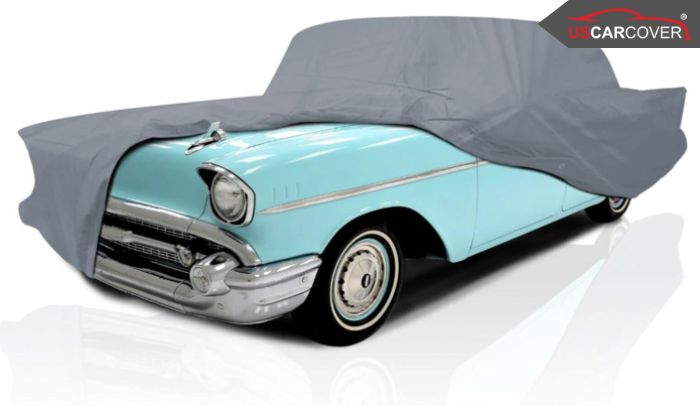
A Kaiser car cover may sound like just another car cover, but for a Kaiser owner it is actually ultra lightweight armor that protects the car from a whole range of damage: harsh sun, violent storms, as well as pollen, falling leaves and dust that can cause scratches. Have you ever felt that sinking feeling when your classic Kaiser’s paint fades in the sun, the interior turns into an oven or the car wakes up covered in pollen after a night parked outside? Or have you hesitated to use a cover because traditional car covers are so heavy and bulky that using them every day feels like a chore?
This article will walk through the familiar pains of leaving a Kaiser outside and show how a lightweight Kaiser car cover can be the perfect “armor” to solve those problems easily and effectively.
Related Articles: Jowett car cover: Compact and durable, with strong anti theft, rain protection
Kaiser: a valuable classic that deserves to be protected

A Kaiser is more than transportation. It is a living piece of post–World War II American automotive history. Kaiser–Frazer appeared in 1947 and quickly made an impression with its modern designs, innovative features and competitive pricing compared with the big Detroit brands. Although the company’s lifespan was short and it stopped building cars in the mid 1950s, the surviving Kaiser models are now highly prized by collectors. They are known for unique touches such as the Kaiser Darrin 1954 with its fiberglass body and sliding doors, or the elegant Kaiser Manhattan sedans that helped pioneer integrated heating and ventilation systems.
Understanding this heritage makes it clear that what you are protecting is not just a metal object on wheels, but also your passion and the history embodied in a rare brand. If you are lucky enough to own a Kaiser, whether it is an open top Kaiser Darrin roadster or a stately Kaiser Manhattan sedan, you naturally want to keep it as close to original as possible. That means more than just maintaining the mechanicals or restoring the interior. It also means shielding the car from everyday environmental damage. A single faded panel, a patch of rust or a cluster of small scratches on a classic Kaiser is painful to see, especially because original parts and period correct paint are now hard to find and expensive.
In other words, prevention is better than repair. It is much smarter to protect the car properly from the start than to wait for slow, silent damage to pile up into problems that are difficult and costly to fix.
Related Articles: Jensen car cover: breathable, soft-lined, UV-shielded to protect classic interiors
UV rays and high temperatures: the invisible enemies in intense sunlight
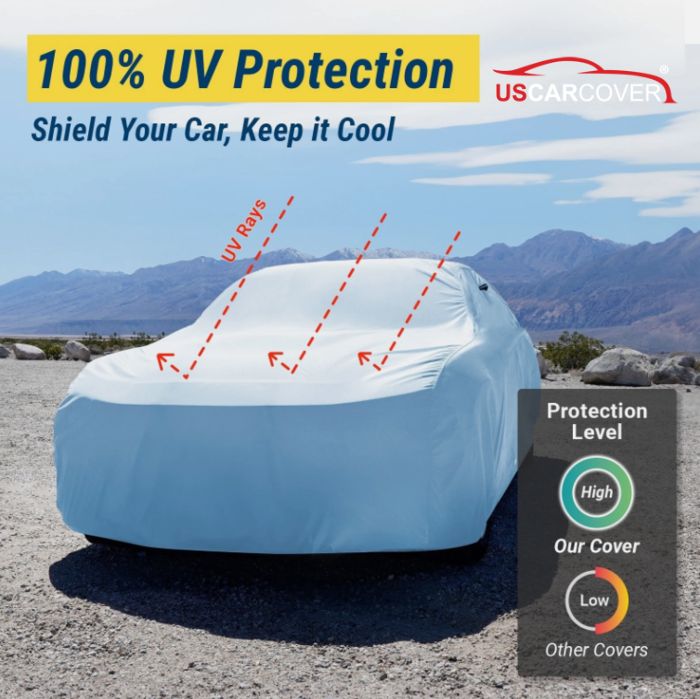
Leaving a Kaiser parked out in full sun might not look dramatic from the outside, but sunlight hides two serious enemies: ultraviolet rays and high cabin temperatures. The shiny paint and classic interior of a Kaiser can deteriorate quickly when baked in the sun. First, ultraviolet radiation gradually destroys paint and exterior surfaces. UV breaks down the molecular structure of automotive paint, which makes the color fade and the finish lose its deep gloss. After a few years of frequent sun exposure, the paint that once looked rich and vibrant can turn dull, and the clear coat can start to oxidize. The surface becomes hazy and chalky. If this continues, the paint can crack or the clear coat can peel away completely. At that point, a major repaint becomes almost unavoidable, which is costly and time consuming.
It is not only the exterior. The interior suffers under UV as well. Dashboards, steering wheels and leather seats can discolor and crack as plastic and leather age prematurely in the sun. Many classic car owners have seen their dash pads split or wood trim develop hairline cracks after only one hot summer where the car sat outside too often. Second, cabin heat is a serious issue. The greenhouse effect turns a closed car into an oven. Interior air temperatures can climb far above comfortable levels on a sunny day, and the surfaces inside, such as the dash and steering wheel, can get even hotter. Imagine a classic Kaiser interior with old plastics, real leather and vintage adhesives being repeatedly heated to very high temperatures. Plastics can warp or crack, leather and rubber harden and split, and old glues can soften and release panels or trim. The result is a tired and damaged interior that no longer matches the car’s beautiful exterior lines.
Beyond damage, extreme heat also makes the car unpleasant to use. Opening the door to a blast of hot air, grabbing a steering wheel that burns your hands and waiting for the air conditioning to catch up are all experiences that undermine the joy of driving a classic. The common thread is clear. UV and heat are silent but powerful forces that can ruin the appearance and lifespan of your Kaiser little by little every day.
Related Articles: Jeep car cover: protection from red mud, desert dust, showers, and snow in one solution
Bulky traditional car covers: a real barrier for owners
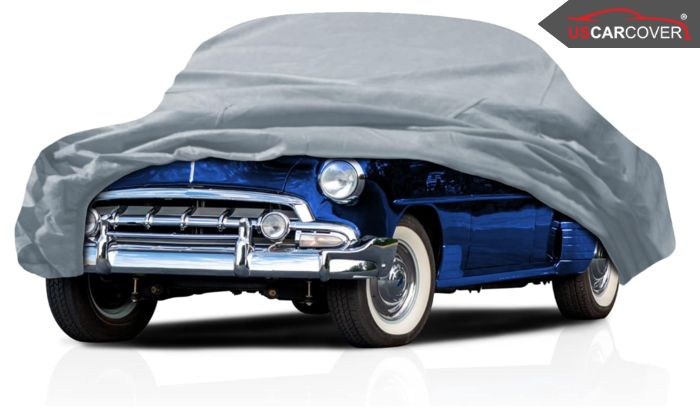
Many owners understand that their cars need coverage. However, a lot of them hesitate to use car covers consistently because the covers they have used in the past were simply too heavy and awkward. This is a very real pain point. You might buy a thick, multi layer cover to protect against weather, but then find that using it is like doing a workout every time. Think about the routine. Every morning you haul a thick, stiff cover out of the trunk, spread it out and struggle to pull it over the car, trying to align it properly. In the evening you reverse the process, wrestling the cover off and folding it back up. The thicker and heavier the cover, the more tiring and time consuming the job. Many people admit that they skip using a cover simply because the process is too annoying, especially if they drive the car regularly.
When folded, heavy covers usually take up a lot of trunk space, which is a problem in classic cars that already have limited storage. Some cheap covers use coarse, stiff material that can scratch the paint as you drag the fabric over the body. Wind is another problem. Even a heavy cover can balloon in the wind if it does not fit properly. If it is not tied down securely, a strong gust can lift it or make it flap against the body, which can cause scratches. On the other hand, if you strap the cover down extra tight to fight the wind, you may mark the paint with tight straps or cords.
In short, a thick, generic cover may offer decent protection, but it is too inconvenient for daily use. That inconvenience is often what leads owners to leave their cars uncovered “just this once” and then again and again until the car ends up sitting outside with no protection for long periods. This is why weight and user friendliness matter. Owners need a protective solution that is easy and quick to use by one person. This is exactly where a lightweight Kaiser car cover comes in. It is designed to eliminate the hassle so you can protect your car every day without feeling burdened by the process.
Related Articles: Jaguar car cover: protecting Nappa leather, wood veneer, and panoramic glass to preserve color
Storms: serious risks for cars parked outside
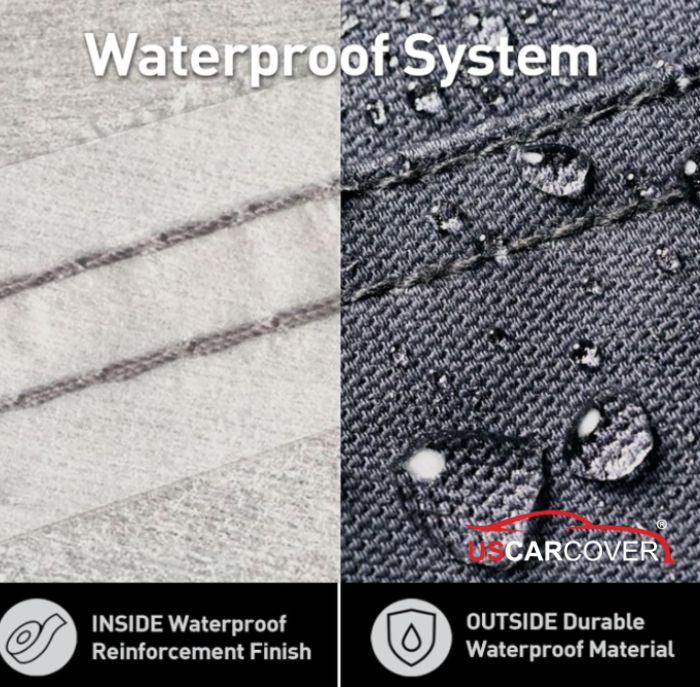
Nature does not only bring sunshine. There are also rain showers, thunderstorms and major storms. Parking a Kaiser outside in a storm carries more risks than many people realize. Rain, especially acid rain near industrial or urban areas, can gradually attack the paint and metal if it pools on panels or seeps into seams. After a storm, if the car is not rinsed, dried rainwater can leave mineral spots and stains on glass and paint that are difficult to remove completely. Heavy rain with strong winds brings additional hazards. Wind can drive all kinds of debris into the car: dirt, twigs, small branches and man made objects. Even a small branch falling from above or being blown into the car can leave long scratches or dents in the bodywork. Many classic car owners have discovered dents on their hoods or roofs after a night of bad weather, sometimes with hail involved. Even relatively small hailstones can chip paint or dent panels if the car is directly exposed.
Gusty winds and swirling debris can also affect doors, hood and trunk lids. On an older car like a Kaiser, where seals and latches may not be as tight as when it was new, strong wind and rain can force water into the cabin through tiny gaps around windows and doors. That leads to wet carpets, interior mold and even electrical issues if water reaches wiring, fuse boxes or connectors. Overall weather resistance on a classic is not at the same level as modern cars, so heavy storms are much more likely to cause damage. The ideal solution is always a fully enclosed garage. However, not everyone has that option everywhere they park. This is where a storm capable car cover becomes essential. A quality cover acts as a shield that wraps around the entire car. Small hail, twigs or light debris first hit the cover instead of the paint. A multi layer cover with a soft inner liner can absorb a significant amount of impact from smaller debris and protect the body underneath.
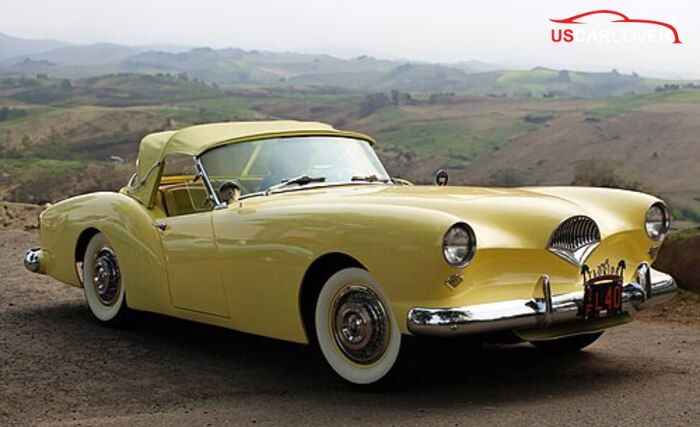
For this to work in real storms, the cover must fit well and be secured properly. A flimsy, poorly fitted cover will be caught by the wind and may even cause more harm if it whips around. A dedicated Kaiser car cover is cut to match the dimensions and shape of Kaiser models and typically includes underbody straps and reinforced attachment points. When installed properly, the cover hugs the body and stays put even in strong gusts, acting like a protective cocoon around your car. Storms will always bring rain, wind and debris, but their impact on your Kaiser can be greatly reduced if the car is wrapped in the right cover.
Related Articles: Isuzu car cover: Is it really necessary to handle night rain, early sun, and daytime dust
Pollen, leaves and dust: small agents, big impact
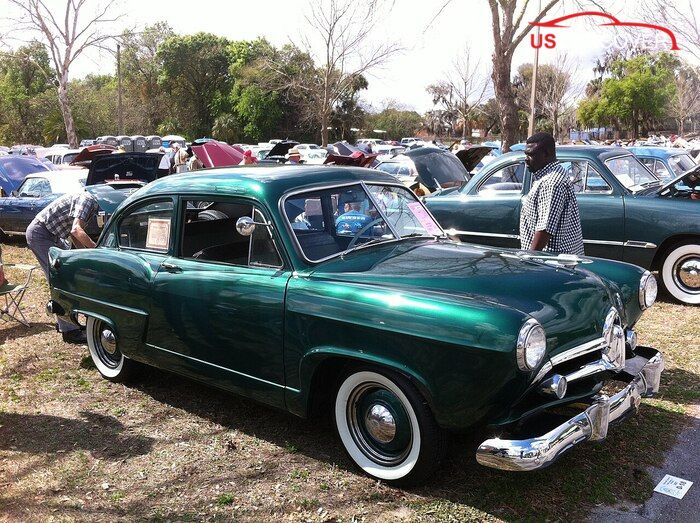
Even without extreme weather, small everyday contaminants such as pollen, leaves and dust can gradually harm your Kaiser if the car is repeatedly parked outside without protection. Parking under trees in spring, you may find your car coated in a yellow layer of pollen by morning. In autumn, dry leaves collect in every nook and cranny. At any time of year, road dust slowly settles on the paint. If these are not dealt with promptly, they become quiet troublemakers over time. Pollen grains, for example, are tiny but have barbed or spiky surfaces under magnification. This makes them act like miniature abrasive particles. If you wipe them off a dry surface or if wind moves pollen around on the paint, they can leave fine swirl marks. On darker paint, those swirls are especially visible under sunlight. Pollen also has acidic components. When combined with moisture from rain or dew, those acids are activated and begin to attack the clear coat, eating into the finish and eventually reaching the base coat and metal if left in place. Over time this can create dull patches and stains that are very difficult to correct.
Fallen leaves bring another set of problems. As they decompose or if they contain sap and tannins, they can stain and etch the paint when left sitting on panels. Certain tree species are particularly aggressive in this respect. Leaves that accumulate at the base of the windshield or in body gaps hold moisture against the metal. On an older car like a Kaiser, this trapped moisture can accelerate rust in hidden areas. Leaves that remain wet and pressed against the car can also move slightly in the wind and act like sandpaper, leaving micro scratches.
Dust is an everyday enemy. It is composed of fine mineral particles and industrial pollutants. A thin layer of dust on paint might seem harmless, but any contact while the dust is present, whether from a casual wipe with a hand or from a loose cover moving in the wind, can drag those particles across the surface and create fine scratches. Over time, dust dulls the finish and makes a once glossy car look tired and flat. Dust also works its way into crevices, where it mixes with moisture and contributes to corrosion and grime buildup.

Most people cannot wash their car every day. Realistically, you may be able to wash once a week or even less. Yet pollen, leaves and dust accumulate much faster than that. Washing too often is also not ideal, because frequent washing and wiping can thin protective wax layers and, if done carelessly, introduce more swirl marks. That is why prevention is much more effective than constant cleaning. Using a Kaiser car cover whenever the car is parked outside creates a physical barrier between these small contaminants and your paint. Instead of landing on the car, pollen, leaves and dust settle on the cover. In the morning, you simply shake or brush off the cover instead of scrubbing the car itself. Leaves stay on top of the cover rather than wedging themselves into the cowl and window channels. Dust is kept off the paint and glass, which means fewer washes and fewer chances to scratch the finish.
Over time, this barrier makes a significant difference. Your Kaiser remains clean and glossy for much longer, and you avoid the slow accumulation of micro damage that eventually makes a classic car look older than it really is.
Related Articles: International car cover: comprehensive protection, small investment for big savings
Kaiser car cover: ultra lightweight armor for complete protection
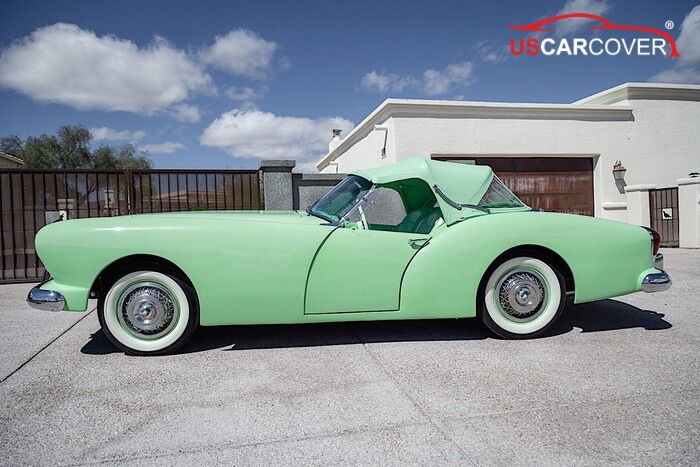
After reviewing the various environmental threats, the importance of using a car cover for your Kaiser should be clear. The remaining question is what kind of cover to choose. This is where a dedicated Kaiser car cover stands out as an ideal solution. It is designed specifically for Kaiser models and combines ultra light weight with serious protective capability. First, a Kaiser car cover is impressively light compared with many traditional multi layer covers. Modern high grade polyester and advanced synthetic fabrics make the cover strong yet easy to handle. You can usually install or remove it in just one or two minutes. This ease of use encourages daily coverage. You stop seeing it as a chore and start seeing it as a simple part of parking the car. The cover folds into a compact bag that takes up very little trunk space, so you can bring it with you wherever you go.
Second, the cover offers excellent sun protection. The outer surface often uses a reflective, UV resistant finish that bounces a large portion of UV radiation away from the car. This reduces UV damage to paint, plastic and rubber, helping to prevent fading, chalking and cracking. By blocking direct sun from the body and glass, the cover also lowers interior temperatures significantly. In practice, the covered car feels more like one that has been sitting in the shade rather than in direct sunlight. That helps preserve the interior and makes the driving experience much more pleasant when you return to the car.
Third, the Kaiser car cover is fully waterproof and built to withstand demanding weather. A quality cover uses a tightly woven base fabric with an advanced water resistant coating. It keeps rain out, and carefully sealed seams prevent leaks at stitch lines. At the same time, the fabric is breathable enough to let moisture inside the cover escape gradually, so condensation does not build up on the paint. The custom fit for Kaiser models and the inclusion of underbody straps or clips keep the cover tight to the body, so wind cannot easily get underneath and lift it. This snug fit turns the cover into a stable shell that remains in place through wind and heavy rain.
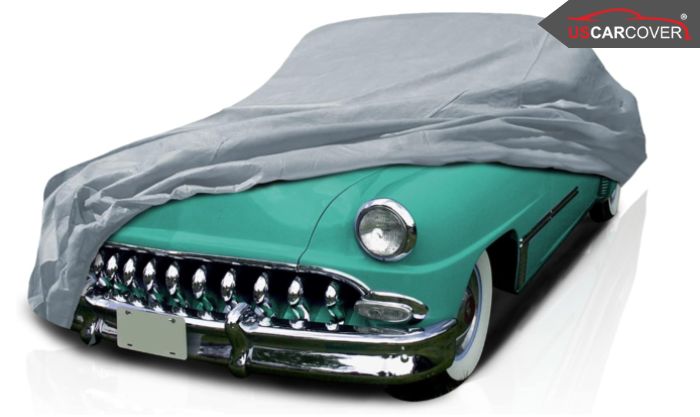
Fourth, the cover actively guards against scratches and small impacts. The inner surface is lined with a very soft material, which is gentle on aging paint and glass. Even when you pull the cover across the car, it glides rather than scraping. The more durable outer layers take the abuse from dust, light debris and casual contact. If someone brushes against the car in a parking lot, they touch the cover first, and the paint stays safe underneath. Small branches, acorns or other light falling objects also hit the cover instead of directly striking the car, which reduces the risk of chips and dents.
Finally, the Kaiser car cover keeps dirt, pollen and moisture off the car, maintaining a cleaner, drier environment around it. Because most contaminants are stopped before they reach the paint or interior, the car needs washing less often, and you are less likely to see mold or musty odors inside from trapped dampness. In short, the Kaiser car cover successfully combines the benefits of light, easy handling with the robust protection you would expect from a much heavier product. It is tailored for classic Kaiser shapes, with every seam and contour designed to shield the car effectively without introducing new risks.
Related Articles: Infiniti car cover: a proactive solution against harsh sun, showers, fine dust and humidity
Protecting the car means protecting your wallet and your passion
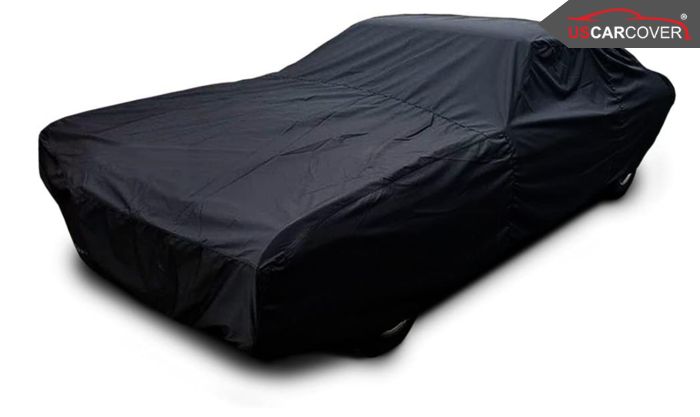
Investing in a Kaiser car cover is about more than just keeping the car physically clean. It also delivers economic and emotional benefits over the long term. From a financial perspective, maintenance and restoration work on a classic like a Kaiser can be very expensive. Bodywork, paint repair and interior restoration involve specialized labor and often rare parts or materials. A single repaint or major rust repair can cost many times more than a high quality car cover. By preventing damage from sun, rain, contaminants and minor impacts, the cover helps you avoid a long list of potential repairs and repainting jobs. Over the years, the cover pays for itself many times over.
In terms of passion and satisfaction, preserving the original condition of the car is essential. For a rare model like a Kaiser, market value depends heavily on originality and condition. A car with original paint in good shape and bright chrome will be valued much more than a similar car with tired, faded paint and visible damage. Even if you never plan to sell, knowing that your car remains as close as possible to how it looked when new is deeply rewarding. Using a Kaiser car cover consistently is one of the simplest and most effective ways to protect that value and preserve the car’s story. It signals that you care about the car and that you are willing to take small, regular steps to safeguard it.
There is also a security angle. Classic cars often attract attention, which can include unwanted attention from thieves or vandals. When a car is fully covered, it is much less eye catching. People cannot see the car’s lines, color or interior details, and they cannot see if there is anything inside worth stealing. While a cover is not an absolute security device, it does reduce the car’s profile as a target, especially for opportunistic theft. The extra effort required to remove a cover, particularly one that is strapped down, is often enough to make a thief move on to an easier target.
Overall, a Kaiser car cover helps you protect your investment, your enjoyment and your peace of mind. It is a relatively small purchase that supports your long term commitment to the car.
Related Articles: Ineos car cover: Always protect your vehicle in every harsh environment
Kaiser car cover is an essential companion for Kaiser owners

Looking back at everything we have covered, it is clear that harsh sunlight, storms, pollen, leaves and dust can all harm a classic Kaiser in different ways. The good news is that you can take control and block most of this damage with a simple habit: covering the car with a Kaiser car cover whenever it is parked outside. This one small action makes a big difference. Each time you pull the cover off, you see a car that is still clean, cool and glossy, as if it had been resting in a private garage rather than under open sky. You do not have to worry about sudden storms, surprise pollen showers or slow fading from UV. You do not have to dread new scratches appearing out of nowhere.
Your Kaiser is not just a way to get from one place to another. It is a treasured asset and a reflection of your taste and passion. It deserves to be guarded with the same care you put into choosing and maintaining it. A Kaiser car cover acts as the car’s ultra lightweight armor, standing between it and the elements every day. Do not let your classic stand unprotected against weather and time. With the right cover in place, you can enjoy your Kaiser with confidence, knowing that you are doing everything reasonable to keep it beautiful and healthy for years to come.
